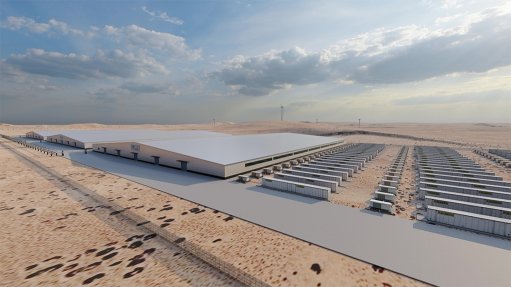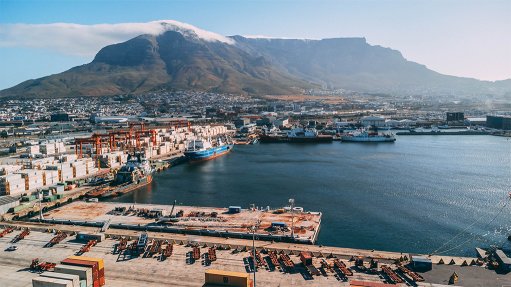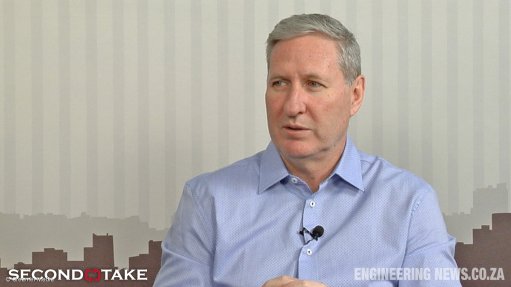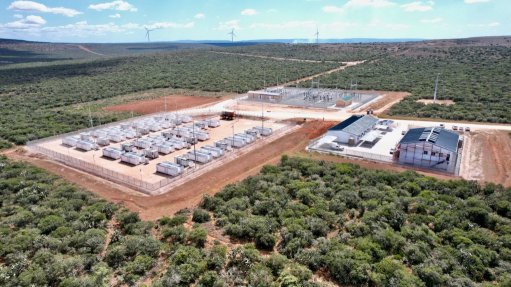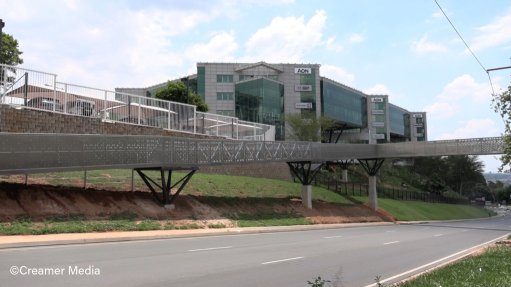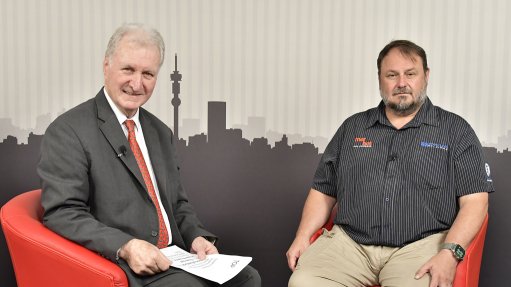Unlocking SA’s wind power requires investor trust in the rules of the game
This article has been supplied.
By: Beth O’Connor - Deputy Head of Project Development, JUWI Renewable Energies South Africa
South Africa’s new Integrated Resource Plan (IRP 2025) and the National Planning Commission’s Energy Transition Scenarios report, both released in recent weeks, outline an ambitious path to a cleaner, more secure power system. To achieve net zero by 2050 we will need R4 trillion in investment and more than 100 gigawatts of new generation capacity by 2039. A third of this -- 34 gigawatts -- must come from wind, the equivalent to about 7 Medupi-sized power stations of clean energy.
The question is whether investors have enough confidence in SA’s policy and procurement environment to unlock the affordable capital needed to fund wind projects and local manufacturing efforts.
The wind sector has faced many challenges. Stop-start government procurement through the government’s Renewable Energy Independent Power Producers Procurement Programme (REIPPPP), together with grid bottlenecks and changing policies, have delayed wind projects, unsettled investors, increased lending costs and stalled investment in local wind-component manufacturing.
We've seen positive policy change in recent years, however. In 2021, the threshold for generation licensing was raised from 1 MW to 100 MW, removing many small-scale barriers to private generation. The Electricity Regulation Amendment (ERA) Act, enacted in 2024, has now formalised a wider liberalisation of the power sector, opening the door to large-scale private generation, direct wheeling and a more competitive electricity market. As a result, the pipeline of private renewable projects has expanded rapidly, and the combined capacity of rooftop and wheeled solar now exceeds that of projects procured through government. Clearly, when investors can operate in a predictable environment, funding flows, as shown by the consolidation of Old Mutual’s renewable holdings into the Anthem platform, backed by Norfund. Major financiers remain committed to South Africa’s energy transition when the policy landscape is clear.
Unlocking that capital at scale depends on the grid, however. With many wind projects stuck without grid access, the Transmission Development Plan (TDP) outlines about R440 billion in grid expansion, while the new Independent Transmission Projects (ITP) programme will allow private participation in grid build-out, easing pressure on Eskom’s balance sheet and unlocking many of the projects still waiting for grid.
We're moving in the right direction. The challenge now is to follow through and make the environment fit for investment and delivery. Here's what I recommend:
One, make the Transmission Development Plan investable. Grid access remains the single biggest constraint on new wind capacity. To give investors confidence, the TDP and ITP must move to bankable delivery. The recent market-sounding exercises and early pilots are encouraging, but consistent delivery and clear communication on milestones will be key to scaling the programme and assuring investors that grid expansion is firmly on track.
Two, reform and stabilise the government’s renewables procurement programme, REIPPPP. If the procurement of new energy sources is to run mainly through the Independent Power Producers (IPP) Office, as Electricity Minister Kgosientsho Ramokgopa noted during the IRP briefing, the country needs a reliable rolling multi-year auction calendar for wind and other projects. Faster evaluation and clear, technology-specific rounds will give investors certainty. Parallel municipal or small-scale procurement rounds can add speed and capacity. In short, if the government is going to run procurement, it must run it predictably, at scale and on schedule.
Three, SA should modernise risk allocation. When REIPPPP began, strong government guarantees made projects low-risk and bankable. Those guarantees have been scaled back, but the rest of the framework hasn’t caught up. SA needs to rethink how risk is shared between government, developers and lenders to keep projects bankable without over-burdening the fiscus. The combination of weaker guarantees and unsustainably low bid prices, many of which have struggled to reach financial close, has further eroded confidence in government-run bid rounds.
Four, clarify grid access and curtailment rules. Recent curtailment rules are an important step forward, but developers like us now need a transparent, milestone-based queue that prevents speculative grid reservations and rewards shovel-ready projects. Curtailment (when generators are told to reduce output because the grid cannot absorb all available power) directly affects project revenue and bankability. These rules now exist, but bankability details still matter: clear compensation, regional limits and forecasting are needed so investors can quantify and manage the risk.
Five, link localisation to a predictable pipeline. Stop-start procurement has already forced closures such as DCD Wind Towers in Nelson Mandela Bay, leaving much of the industrial capability built in the early REIPPPP rounds dormant or lost. Apart from civil and electrical works, the wind sector now relies mostly on imported components. A steady, phased build programme would give manufacturers the confidence to reinvest and expand, helping to rebuild local capacity. The South African Renewable Energy Master Plan, released in April, sets out how towers, rotors and even blades could again be produced locally, but this depends on a stable project pipeline, and, critically, on a viable domestic steel industry, now under pressure following ArcelorMittal SA’s long-steel plant closures.
Finally, streamline approvals and strengthen institutions. Environmental and land-use approvals need firm timelines and better coordination. Operation Vulindlela, the government’s programme to fast-track structural reforms, and the One Stop Shop, which helps investors navigate regulatory processes, have helped, but agencies like the IPP Office, NERSA, the Grid Access Unit and NTCSA must apply rules consistently and avoid last-minute changes. Predictability at every level, from grid access to permitting, is what will restore investor confidence.
Renewable investment, particularly in solar, is continuing through private deals and bilateral power agreements, showing the industry’s determination to move forward. But wind cannot expand at the scale required without coordinated grid investment, predictable procurement and stable policy. The industry will keep developing what we can, but the full potential of South Africa’s wind resource will remain out of reach until the government provides a consistent framework for delivery. In the end, it is certainty that will unlock wind projects.
Article Enquiry
Email Article
Save Article
Feedback
To advertise email advertising@creamermedia.co.za or click here
Comments
Announcements
What's On
Subscribe to improve your user experience...
Option 1 (equivalent of R125 a month):
Receive a weekly copy of Creamer Media's Engineering News & Mining Weekly magazine
(print copy for those in South Africa and e-magazine for those outside of South Africa)
Receive daily email newsletters
Access to full search results
Access archive of magazine back copies
Access to Projects in Progress
Access to ONE Research Report of your choice in PDF format
Option 2 (equivalent of R375 a month):
All benefits from Option 1
PLUS
Access to Creamer Media's Research Channel Africa for ALL Research Reports, in PDF format, on various industrial and mining sectors
including Electricity; Water; Energy Transition; Hydrogen; Roads, Rail and Ports; Coal; Gold; Platinum; Battery Metals; etc.
Already a subscriber?
Forgotten your password?
Receive weekly copy of Creamer Media's Engineering News & Mining Weekly magazine (print copy for those in South Africa and e-magazine for those outside of South Africa)
➕
Recieve daily email newsletters
➕
Access to full search results
➕
Access archive of magazine back copies
➕
Access to Projects in Progress
➕
Access to ONE Research Report of your choice in PDF format
RESEARCH CHANNEL AFRICA
R4500 (equivalent of R375 a month)
SUBSCRIBEAll benefits from Option 1
➕
Access to Creamer Media's Research Channel Africa for ALL Research Reports on various industrial and mining sectors, in PDF format, including on:
Electricity
➕
Water
➕
Energy Transition
➕
Hydrogen
➕
Roads, Rail and Ports
➕
Coal
➕
Gold
➕
Platinum
➕
Battery Metals
➕
etc.
Receive all benefits from Option 1 or Option 2 delivered to numerous people at your company
➕
Multiple User names and Passwords for simultaneous log-ins
➕
Intranet integration access to all in your organisation






